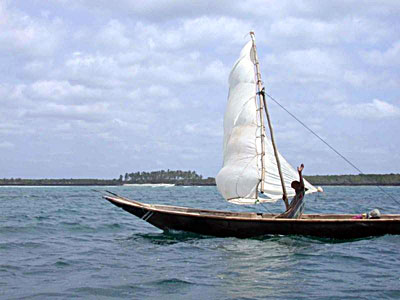Welcome to the ASCLME Project
 Between 2008 and 2013, the nine countries of the western Indian Ocean region, including Comoros, Kenya, Madagascar, Mauritius, Mozambique, Seychelles, Somalia, South Africa and Tanzania, will work together through the UNDP supported GEF financed Agulhas and Somali Current Large Marine Ecosystems (ASCLME) Project.
Between 2008 and 2013, the nine countries of the western Indian Ocean region, including Comoros, Kenya, Madagascar, Mauritius, Mozambique, Seychelles, Somalia, South Africa and Tanzania, will work together through the UNDP supported GEF financed Agulhas and Somali Current Large Marine Ecosystems (ASCLME) Project.
The five-year Agulhas and Somali Current Large Marine Ecosystems (ASCLME) project is centred on the two large marine ecosystems (LMEs) of the western Indian Ocean region. These are the Somali Current LME – which extends from the Comoros Islands and the northern tip of Madagascar up to the horn of Africa – and the Agulhas Current LME which stretches from the northern end of the Mozambique Channel to Cape Agulhas.
The ASCLME project is funded by the Global Environment Facility (GEF) and implemented by the United Nations Development Programme (UNDP).

The goal of the ASCLME project is to ensure the long-term sustainability of the living resources of the ASCLME region by introducing an ecosystem-based approach to management.
The overall project objectives are:
- To acquire sufficient baseline data to support an ecosystem-based approach to the management of the Agulhas and Somali Current LMEs.
- To produce a Transboundary Diagnostic Analysis (TDA) and Strategic Action Plan (SAP) for both the Agulhas Current and Somali Current LMEs.
The project aims to address the Agulhas and Somali Current LMEs under one initial assessment process because (i) this is a more cost-effective approach for the GEF and (ii) the two systems are closely interlinked. In fact, the project also intends to extend the assessment to include the Mascarene Plateau. There is existing data and strong evidence that this plateau to the east of Madagascar exerts a considerable influence on both LMEs through its effects on the South Equatorial Current, a primary driver of both the Agulhas and Somali current systems. The information from this assessment and data collection phase will, be used to develop discrete TDAs and eventually SAPs for the ACLME and SCLME, and possibly help to confirm the presence of a Mascarene Plateau LME so as to allow consideration to be given for initiating a TDA and SAP process for this area at a later date.
Detailed outcomes, outputs and deliverables have been prepared to guide the implementation of the ASCLME project. The outputs and deliverables effectively set out the project activities within a clearly defined timeframe.
A series of well coordinated oceanographic research cruises is planned to gather information about the oceanography and living marine resources of the two LMEs. The coastal resources and their critical link to the well-being of coastal communities will also come under intense scrutiny. An estimated 56 million people, living in the nine countries of the region, are dependent on the resources of the two LMEs.
The Agulhas and Somali currents have a major influence on the societies and economies of the Western Indian Ocean region but there are large gaps in our understanding of their oceanographic processes, biodiversity and other fundamentals. For example, scientists estimate that less than 50 percent of marine species off the east coast of Africa have been described.



